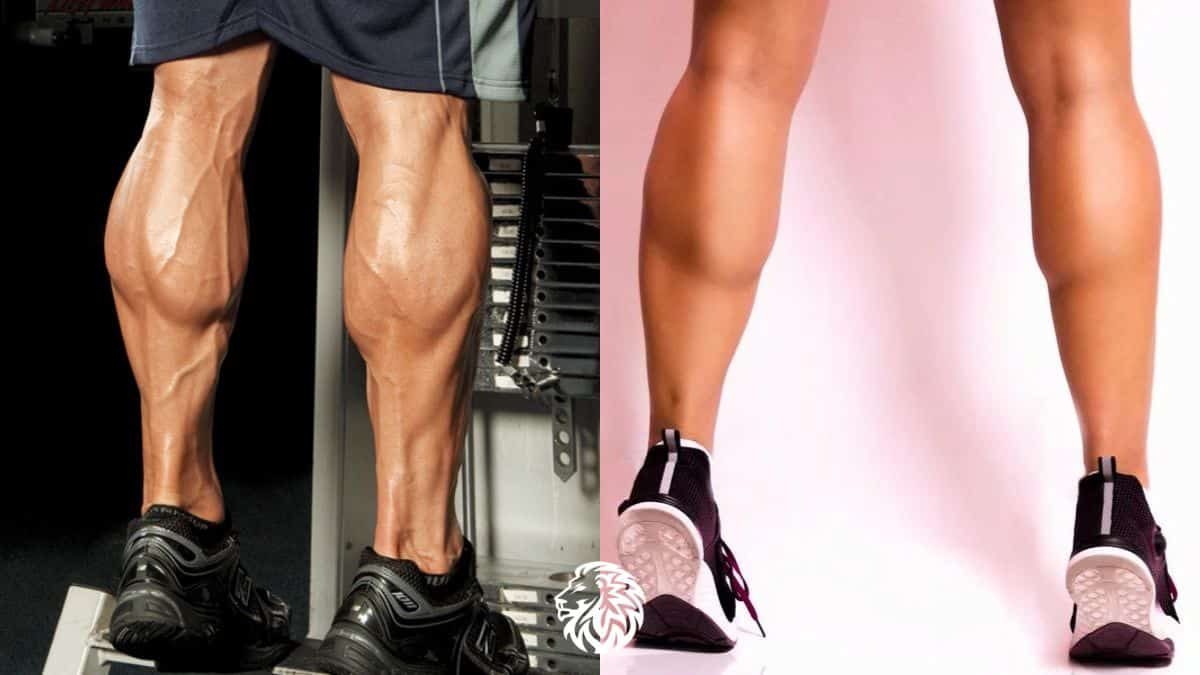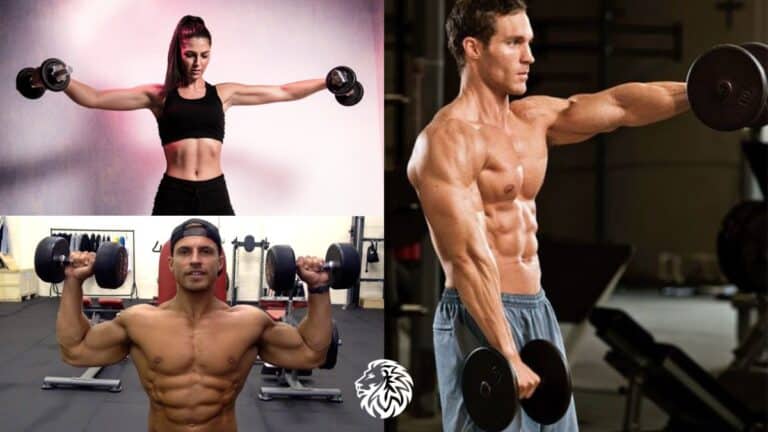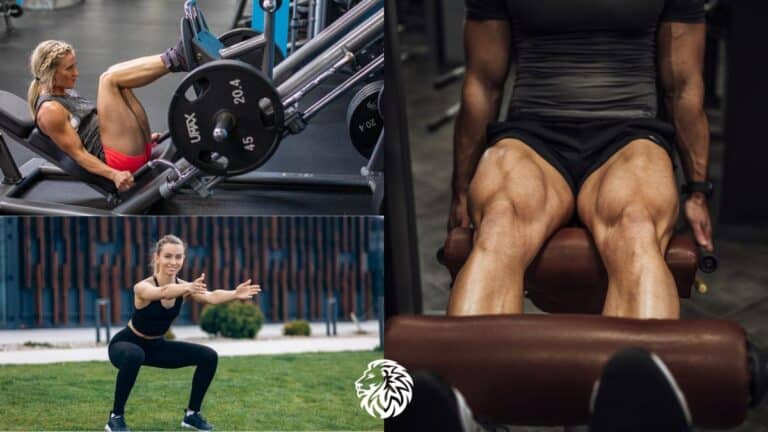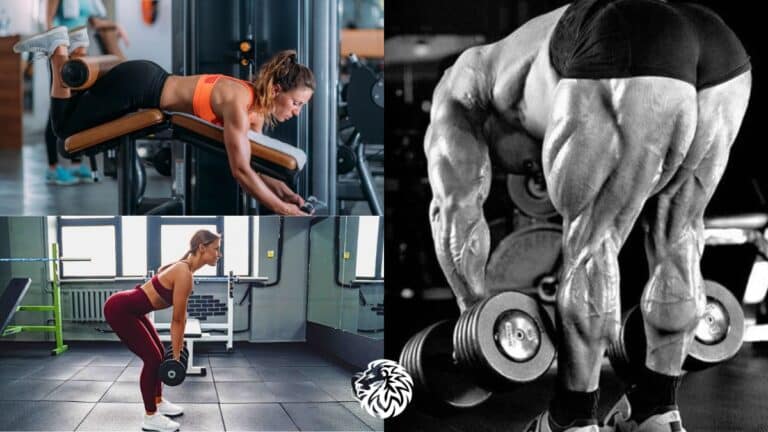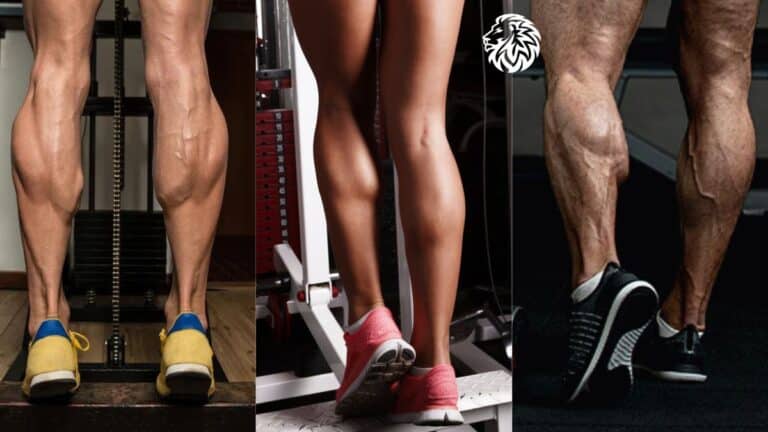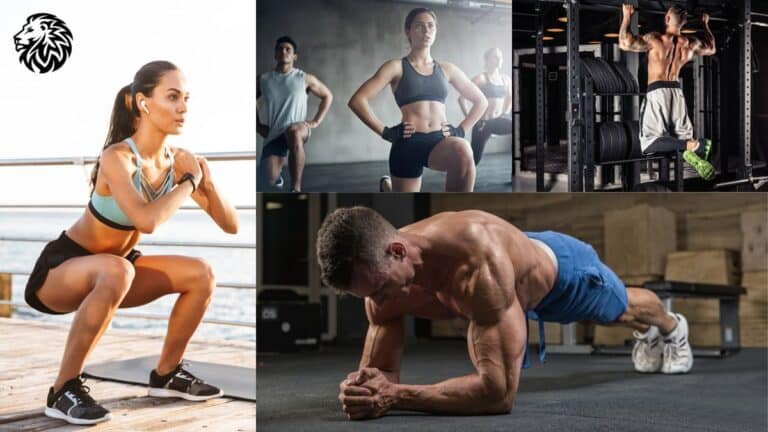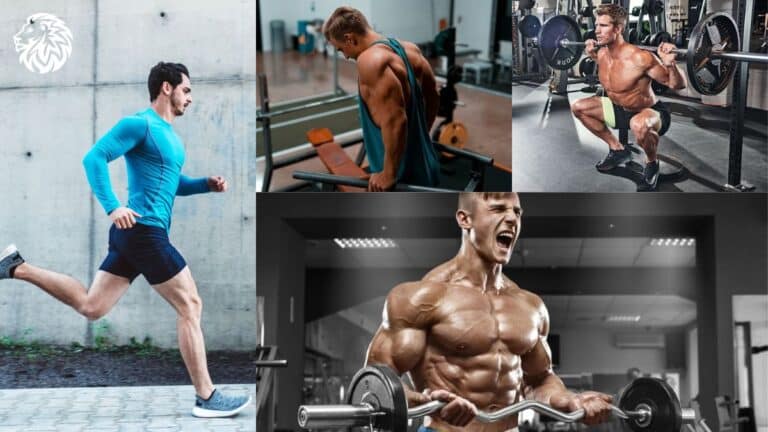Let’s not forget about those calves while we’re sweating it out in the gym! All too often, we’re zoning in on the heavy hitters – the quads, hamstrings, and glutes, leaving our calves in the dust. But trust me, they’re far from just the little guys on your lower legs. Calves are key players in a bunch of physical activities, help keep our legs looking great, and play a big part in keeping us balanced. They’re also the secret sauce to a toned, muscular lower body look.
Get ready, because we’re about to dive into nine top-tier exercises that’ll seriously boost your calf game. Doesn’t matter if you’re an athlete wanting to step up your performance or just someone hunting for a more muscular look – these exercises are set to shake things up. So, buckle up! We’re taking a journey through the calf’s anatomy, the superpowers strong calves give you, and a deep dive into the best calf-building exercises out there. Let’s get to it!
Understanding the Anatomy of the Calf
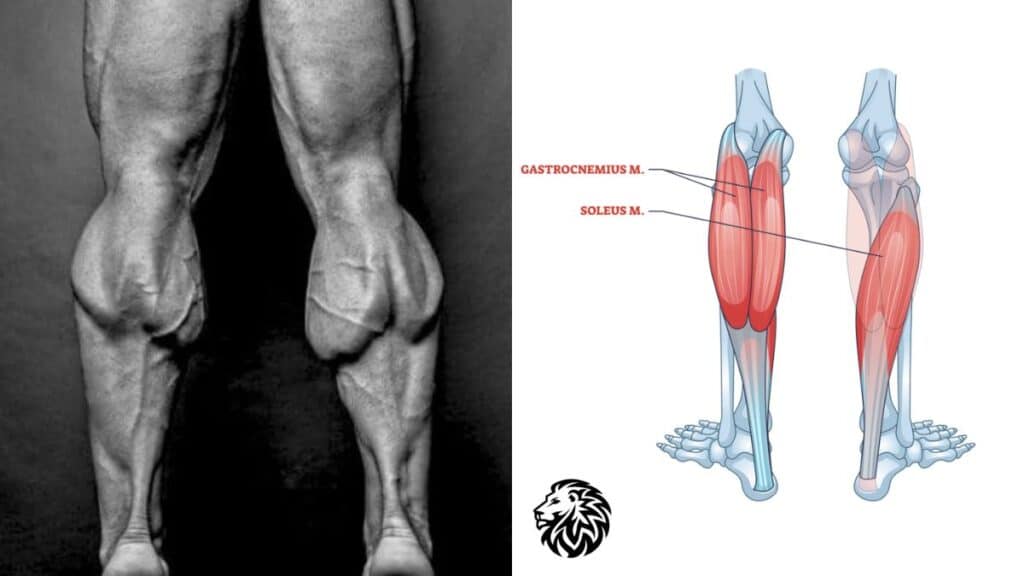
Before embarking on the journey of strengthening and adding mass to your calves, it’s essential to understand the basic anatomy involved. Your calf is primarily composed of two muscles: the gastrocnemius and the soleus.
The Gastrocnemius: This is the larger, more visible muscle that gives the calf its distinctive rounded shape. It’s further divided into two sections, the medial head and the lateral head. The gastrocnemius is primarily responsible for the flexing of the foot at the ankle (plantar flexion) and bending the knee. This muscle is more heavily engaged during standing calf exercises.
The Soleus: This muscle is located underneath the gastrocnemius, and while it may not be as visually prominent, it plays a crucial role in the strength and function of the calf. The soleus is active in plantar flexion like the gastrocnemius, but it’s primarily engaged when the knee is bent, as in seated calf exercises.
Each of these muscles has unique characteristics and functions, and to achieve balanced calf development, you need to target both with your workout regimen. Understanding this basic anatomy can help you choose the right exercises to effectively build both mass and strength in your calves.
Benefits of Strong Calves
Strong and well-developed calves are not only aesthetically pleasing, but they also offer several practical benefits, which we will now explore.
- Enhanced Athletic Performance: Regardless of the sport or physical activity, calves play a critical role. From explosive movements in sports like basketball and soccer to endurance-based activities like running and cycling, strong calves are a fundamental component. They contribute to the power in your stride, jump, and overall agility, leading to improved athletic performance.
- Injury Prevention: Strong calves help stabilize the ankle joint and absorb shock during physical activity. This reduces the risk of common sports injuries such as sprains, strains, and fractures. They can also help prevent overuse injuries, such as shin splints and Achilles tendonitis, which are often associated with weak or imbalanced calf muscles.
- Improved Aesthetics: A pair of well-developed calves complements the overall appearance of your legs. They provide balance and proportion to your lower body, contributing to a more muscular and athletic physique.
- Benefits to Everyday Movements and Overall Balance: Even outside of sports and fitness, strong calves are beneficial. They assist in everyday movements like walking, climbing stairs, and maintaining balance. As we age, maintaining strength in our lower legs is crucial for overall mobility and independence.
List of 9 Best Calves Exercises for Mass and Strength
1. Standing Calf Raise

Stand upright holding a dumbbell in each hand with your feet hip-width apart. Place the balls of your feet on an elevated surface (like a block or the edge of a step), with heels hanging off the edge. Keep your core engaged, shoulders relaxed, and look straight ahead. Raise your body upward by extending your ankles and flexing your calves. Slowly lower your body back down to the starting position where your calves are stretched.
Recommended sets, reps, and rest periods: 3 sets of 15-20 repetitions with 60-90 seconds rest in between.
2. Seated Calf Raise
Sit on a seated calf raise machine and place your toes on the lower portion of the platform with your heels extending off it. Your knees should be at a 90-degree angle. Lower the knee pad onto your lower thighs. Lift the lever slightly by pushing your heels up and release the safety bar. Slowly lower your heels by bending at the ankles until calves are fully stretched. Raise the heels by extending your ankles as high as possible while contracting the calves, hold for a moment, then slowly go back to the starting position.
Recommended sets, reps, and rest periods: 3 sets of 12-15 repetitions with 60-90 seconds rest in between.
3. Farmer’s Walk on Toes
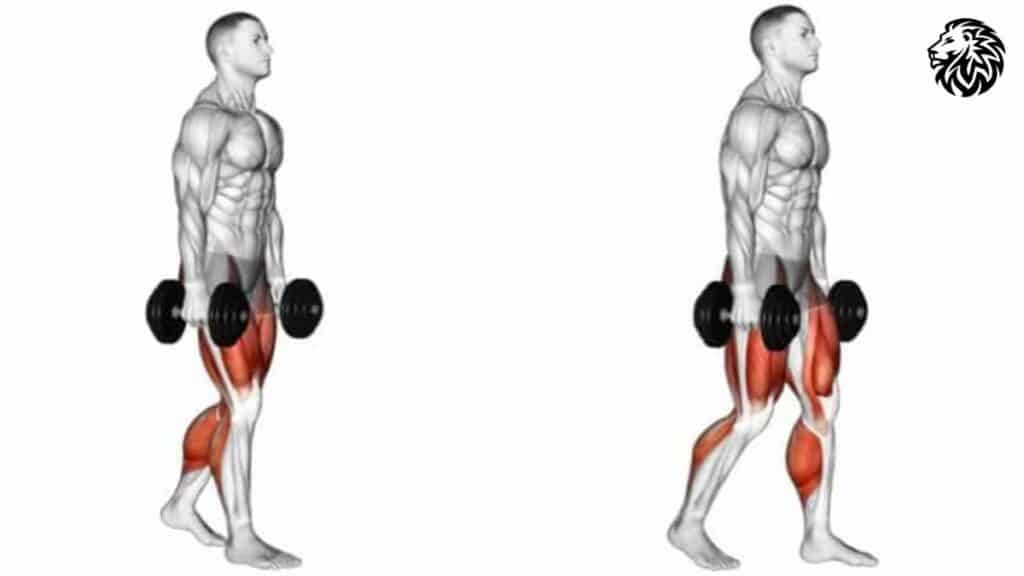
Stand tall holding a pair of dumbbells at your sides, your palms facing inwards towards your body. Push up onto the balls of both feet to raise your body upward. Maintain balance and keep your abdominal muscles pulled in so that you move straight ahead. Walk forward while staying on your toes, as if you’re trying to see over a crowd.
Recommended sets, reps, and rest periods: 3 sets of 20-30 steps with 60-90 seconds rest in between.
4. Jump Rope
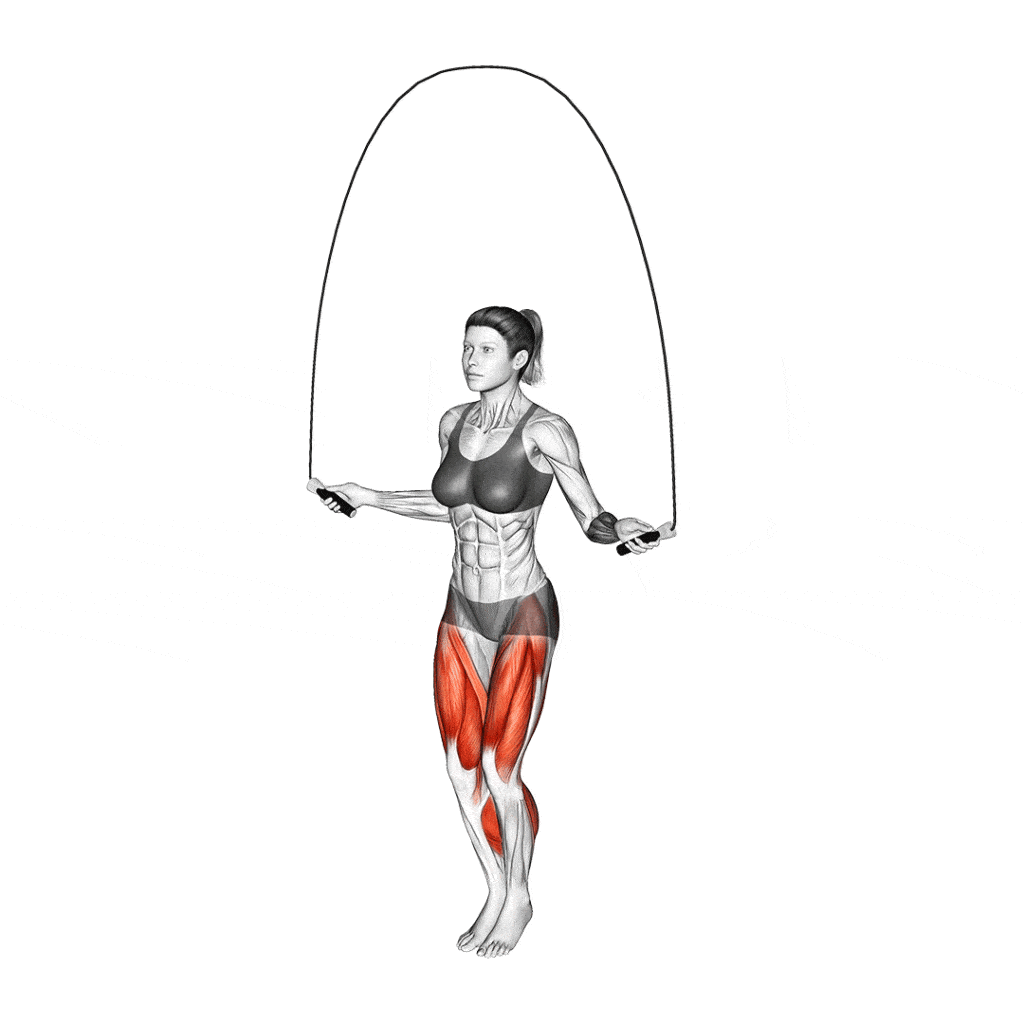
Start with the jump rope handles in each hand. The rope should be behind you, resting on your heels. Swing the rope over your head and as it reaches the front, hop over it lightly on your toes. Maintain a steady rhythm, and keep your upper body relaxed while your wrists turn the rope.
Recommended sets, reps, and rest periods: 3 sets of 1-minute jumps with 30-60 seconds rest in between.
5. Box Jumps
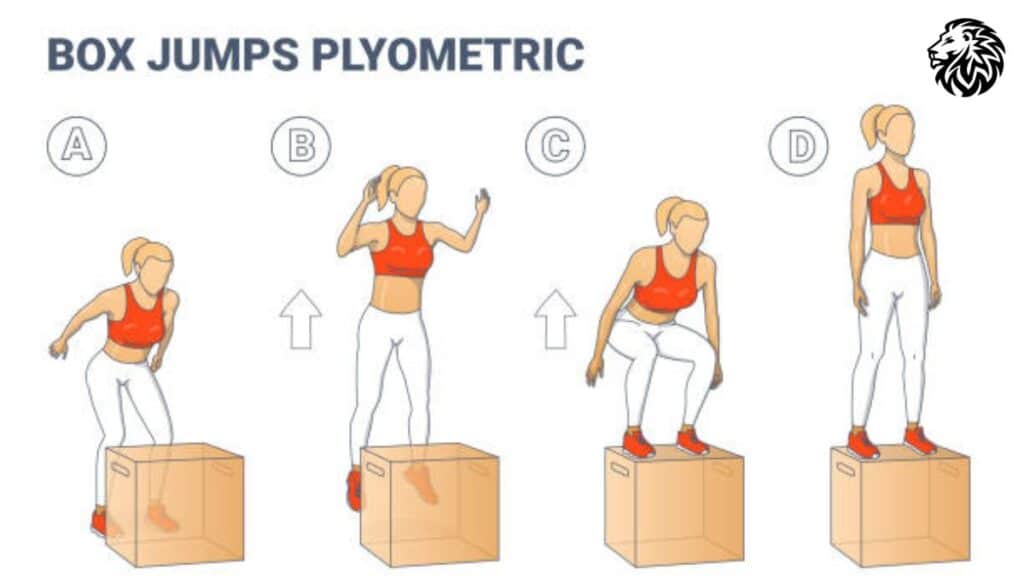
Stand in front of a sturdy box or platform, feet shoulder-width apart. Bend into a half-squat and explosively jump up onto the box, landing with your feet flat and knees slightly bent to absorb the impact. Stand tall at the top, then step or hop back down to the starting position.
Recommended sets, reps, and rest periods: 3 sets of 10-15 jumps with 60-90 seconds rest in between.
6. Calf Press on the Leg Press Machine
Sit on a leg press machine and place your feet high on the platform so only the balls of your feet and toes are on it, with your heels hanging off. Your feet should be hip-width apart. Press upward by extending your ankles and flexing your calves, lifting the weights of the machine. Lower back down until your calves are fully stretched, ensuring you don’t let the weights rest back on the stack until you’ve completed your set.
Recommended sets, reps, and rest periods: 3 sets of 15-20 repetitions with 60-90 seconds rest in between.
7. Stair Climbs
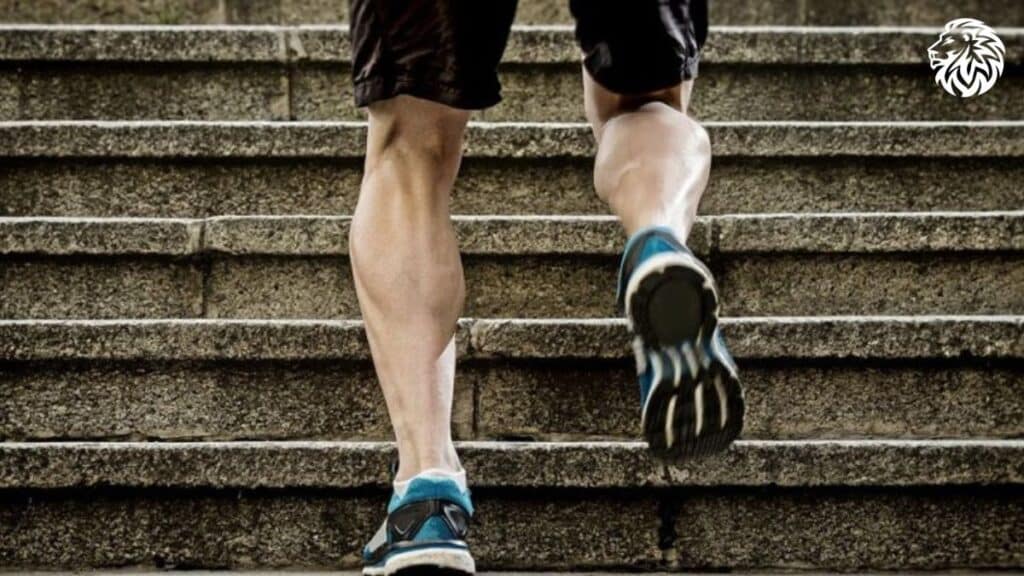
Find a set of stairs and stand at the bottom. Step up onto the first step with your right foot, then bring your left foot up to meet it. Then step up onto the next step with your right foot, and again bring your left foot up to meet it. Keep your back straight, core engaged, and maintain a brisk pace. To increase difficulty, try skipping a step.
Recommended sets, reps, and rest periods: 3 sets of 15-25 stair climbs with 60-90 seconds rest in between.
8. Donkey Calf Raises

Position yourself on a calf raise machine, with your lower back and hips under the padded lever, and the balls of your feet on the platform. Bend at the waist and grasp the handles for support. Your torso should be parallel to the ground. Keep your knees slightly bent but stationary. Push your heels up as high as possible by extending your ankles and contract your calves, then slowly lower your heels back down.
Recommended sets, reps, and rest periods: 3 sets of 15-20 repetitions with 60-90 seconds rest in between.
9. Single-leg Calf Raise
Stand upright holding a dumbbell in your left hand by your side, with the ball of your left foot on an elevated surface and your right toes resting on your left ankle. Raise your body upward by extending your left ankle and flexing your calf. Slowly lower your body back down to the starting position where your calf is stretched. Repeat for the recommended repetitions and then switch to the right leg.
Recommended sets, reps, and rest periods: 3 sets of 12-15 repetitions per leg with 60-90 seconds rest in between.
Tips for Effective Calf Training
Overview of Training Frequency and Volume for Optimal Calf Development
While many factors can influence the effectiveness of your calf training, one of the most important considerations is how often and how much you train these muscles. Because the calves are used to constant work in daily activities, they often require higher volume and frequency of training for significant development. Ideally, training calves 2-3 times per week with high volume (high reps and sets) can stimulate growth effectively.
Discussion on the Importance of Diet and Recovery in Muscle Growth
Nutrition plays a crucial role in muscle growth and recovery. Consuming a balanced diet rich in protein, complex carbohydrates, and healthy fats can support muscle repair and growth post-workout. Additionally, adequate rest and recovery are essential. This includes both sleep and rest between workouts. Overtraining can lead to injury and impede progress, so it’s essential to listen to your body and give it time to recover.
Tips for Overcoming Common Plateaus in Calf Development
If you find that your progress in calf development has stalled, consider changing your approach. This could involve adjusting the load, increasing the volume, modifying the exercise tempo, or changing the exercises you’re doing. Additionally, focus on the mind-muscle connection during your workouts. This involves concentrating on the muscle you’re working on and consciously controlling the contraction and extension during each repetition. It can lead to more effective muscle engagement and potentially greater gains.
Common Mistakes When Training Calves
Common Mistakes and How to Avoid Them
- Ignoring the Full Range of Motion: Not utilizing the full range of motion can limit the effectiveness of your calf workouts. It’s crucial to go from full extension (heels up) to full flexion (heels down) to engage the entire muscle group.
- Rapid Reps: Speeding through repetitions can compromise form and limit the effectiveness of the exercise. Focus on slow, controlled movements and squeezing at the top of each rep for maximal muscle engagement.
- Neglecting the Soleus: Most people focus only on exercises that target the gastrocnemius, forgetting the soleus muscle which lies underneath. Incorporate both standing (which targets the gastrocnemius) and seated (which targets the soleus) calf exercises for balanced development.
- Overtraining: Training the calves every day can lead to overuse injuries. While they are durable muscles, they still need time to recover and grow. As previously mentioned, aim for 2-3 times a week of focused training.
Avoiding these common mistakes can significantly improve your calf training outcomes. Each of these points ensures that you’re properly stimulating the muscles for growth and strength while avoiding potential injuries. By focusing on the correct form, complete range of motion, balanced training, and appropriate rest, you set yourself up for effective and sustainable calf development.
Conclusion
This article has provided a comprehensive guide to building calf strength and mass, starting with an understanding of the calf muscles and the benefits of strengthening them. We’ve explored nine of the best exercises for calf development and how to perform them effectively. We’ve also highlighted the importance of adequate training volume and frequency, balanced nutrition, and sufficient recovery time. Additionally, we have discussed common mistakes to avoid during calf training for optimal results.
Building calf strength and mass is a journey that requires consistency and patience. It’s not about quick fixes but rather long-term dedication. Remember that progress may be slow, but any progress is a step in the right direction. Keep pushing forward, stay consistent with your workouts, prioritize recovery, and maintain a balanced diet. Over time, you will see changes in your calf strength and mass, enhancing not just your physical appearance but also your overall athletic performance and quality of life. Stay committed to your fitness journey, and remember that every step you take brings you closer to your goals.
Frequently Asked Questions
I’m doing calf exercises regularly, but I don’t see any visible growth. What could be the problem?
Calf muscles can be stubborn to grow due to their daily use and genetic factors. Also, remember that they may require higher volume training than other muscle groups. Ensure that you’re performing your exercises with correct form, full range of motion, and sufficient load. Additionally, give equal attention to the gastrocnemius and soleus muscles. Lastly, don’t overlook the importance of a balanced diet and adequate recovery time for muscle growth.
How can I ensure I’m engaging my calves and not my thighs or glutes during calf exercises?
To focus on your calves, concentrate on the “mind-muscle connection”. This involves consciously thinking about your calves during the movement and squeezing them at the top of each repetition. Also, be sure to fully extend and flex your ankles during the exercises. Avoid pushing through your quads or glutes, which can sometimes happen if you’re using too much weight.
I’m finding it hard to balance during standing calf raises. Any tips?
Balancing during standing calf raises can be challenging at first. To improve your balance, focus on a spot directly ahead of you and keep your core engaged during the movement. If you still find it difficult, try doing the exercise near a wall or a sturdy object so you can lightly hold onto it for support.
My calves often cramp during or after workouts. How can I prevent this?
Cramps during or after workouts can often be a sign of dehydration or lack of certain nutrients, like potassium and magnesium. Make sure you’re staying well-hydrated before, during, and after your workouts, and maintain a balanced diet rich in essential vitamins and minerals. Stretching and warming up before your workout and cooling down afterward can also help prevent cramps.
Should I be doing both seated and standing calf exercises?
Yes, incorporating both seated and standing calf exercises in your workout routine is a good idea. Seated calf exercises mainly target the soleus muscle, while standing exercises target the larger gastrocnemius muscle. To ensure balanced calf development, it’s important to work both muscles effectively.
